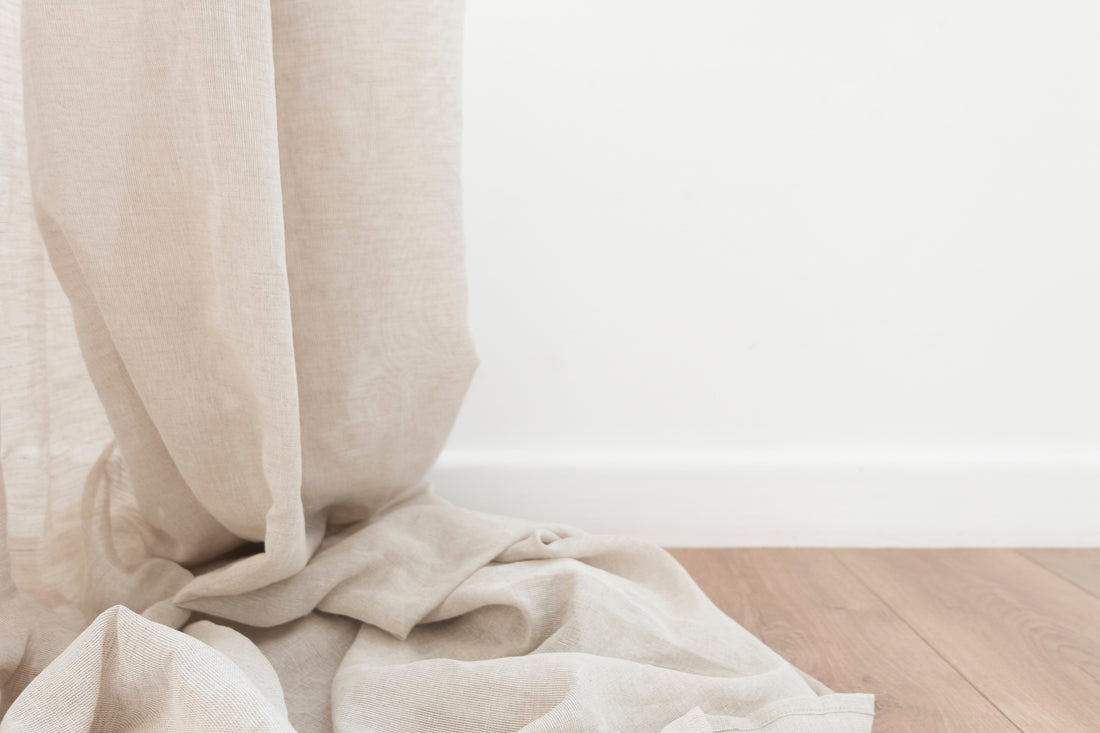The Natural Elegance of Handmade Linen: A Sustainable Choice for the Discerning Wardrobe
In today's fast-paced world, where trends come and go, there is something timeless about simplicity. As conscious consumers, we seek out products that align with our values of sustainability and quality. One such fabric that embodies these qualities is linen.
In this blog post, we will delve into the world of linen, exploring its eco-friendly nature and its ability to effortlessly merge into any wardrobe, while highlighting the natural elegance of handmade linen products.
1 - Understanding Linen and its Environmental Benefits
Linen, derived from the flax plant, is a fabric known for its exceptional environmental benefits. Flax, a resilient plant, requires minimal water compared to other crops, making it an eco-friendly choice. It can be grown in diverse climates, reducing the need for excessive irrigation.

How is linen grown and produced?
The process of growing flax and producing linen involves several steps. Flax plants are harvested, and their fibres are extracted through a process called retting. Retting can be done through water retting or dew retting, both of which are natural and environmentally friendly methods. Once the fibres are separated, they are spun into yarn or woven directly into fabric.
Where is the best linen made?
When it comes to the production of linen, some regions are renowned for their expertise. However other countries are investing in the production of linen, the best linen is often associated with countries like Belgium, France, and Ireland. These regions have a long-standing tradition of cultivating flax and producing high-quality linen fabric. The artisans in these areas have mastered the art of linen production, ensuring that the fabric meets the highest standards of craftsmanship. To know more on this topic, specifically about linen, check the website of the Confédération européenne du lin et du chanvre (CELC)
2 - The Durability and Longevity of Linen
When comparing linen to other fabrics like cotton, bamboo, and hemp, linen stands out for its remarkable durability. Linen fibres are known for their inherent strength and natural resistance to wear and tear. This exceptional durability ensures that linen garments can withstand the test of time and maintain their integrity even after years of use.
Tips for buying linen online
In the world of online shopping, it's important to have some tips in mind when buying linen. Firstly, check the fabric composition and look for 100% linen or a high percentage of linen. Be wary of blends that might compromise the fabric's quality and durability. Secondly, pay attention to customer reviews and ratings to gauge the quality and authenticity of the product. Lastly, consider the reputation and credibility of the seller or brand. Opt for trusted sources that prioritize sustainability and transparency in their manufacturing process.
If you want to know more, feel free to download our Free Mini-guide to buy linen fabric online.
The uses of linen in fashion
Linen's versatility extends beyond clothing. It is a fabric widely used in the fashion industry due to its unique qualities. Linen's breathability and moisture-wicking properties make it ideal for warm climates and summer clothing. It keeps the body cool and comfortable by allowing air circulation. Linen's natural texture adds an element of casual sophistication to garments, making it suitable for both casual and formal attire. Also, linen is widely used in accessories due to its durability and refined look. Our bags are one good example of that.
3: Linen's Simple Care and Low Maintenance
One of the most appealing qualities of linen fabric is its easy care and low maintenance. Linen is naturally wrinkle-resistant, allowing for a relaxed and effortless look. While ironing may be desired for a crisper appearance, embracing the natural texture of linen is part of its charm. Linen's slight wrinkles convey an authentic and lived-in feel, reflecting the fabric's organic appeal and adding a touch of effortless elegance to any outfit.
How to care for linen
When it comes to caring for linen fabric, a few tips can help prolong its lifespan. Linen garments are best washed with gentle detergents in cool or lukewarm water. It is advisable to hand wash linen or use a gentle machine wash cycle to prevent excessive agitation. Avoid using bleach or harsh chemicals, as they can damage the fabric fibres.
How to remove a stain from linen
To remove stains from linen, act promptly. Blot the stain gently with a damp cloth or sponge, and avoid rubbing vigorously, as this can spread the stain further. For more stubborn stains, consider using natural stain removers like baking soda or white vinegar. Before applying any stain remover, test it on a small, inconspicuous area of the fabric to ensure it doesn't cause discoloration.
In a world that often prioritizes fast fashion and fleeting trends, linen stands as a beacon of sustainability, durability, and timeless style. Its eco-friendly cultivation process, remarkable durability, simple care requirements, and the authentic charm of handmade craftsmanship make linen an ideal choice for the conscious consumer.
Embracing linen means embracing a more sustainable and elegant lifestyle, where quality and simplicity take centre stage. Let us choose linen and revel in its natural beauty while treading lightly on our planet.
Based on your feedback to our best seller linen tote bags we are working on some new features. Feel free to follow along on Instagram or get more in dept information by joining our newsletter.

